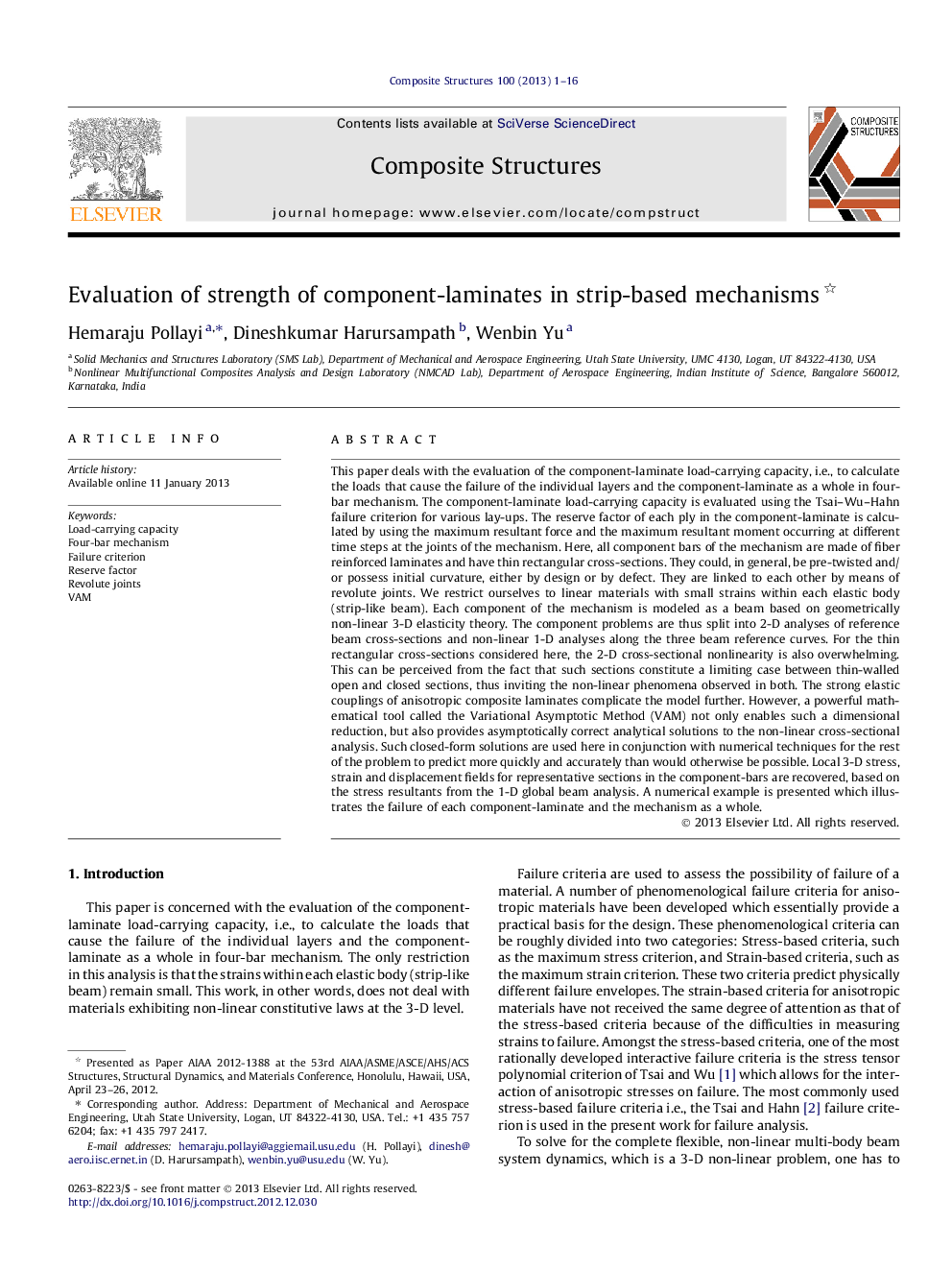| کد مقاله | کد نشریه | سال انتشار | مقاله انگلیسی | نسخه تمام متن |
|---|---|---|---|---|
| 251902 | 502949 | 2013 | 16 صفحه PDF | دانلود رایگان |

This paper deals with the evaluation of the component-laminate load-carrying capacity, i.e., to calculate the loads that cause the failure of the individual layers and the component-laminate as a whole in four-bar mechanism. The component-laminate load-carrying capacity is evaluated using the Tsai–Wu–Hahn failure criterion for various lay-ups. The reserve factor of each ply in the component-laminate is calculated by using the maximum resultant force and the maximum resultant moment occurring at different time steps at the joints of the mechanism. Here, all component bars of the mechanism are made of fiber reinforced laminates and have thin rectangular cross-sections. They could, in general, be pre-twisted and/or possess initial curvature, either by design or by defect. They are linked to each other by means of revolute joints. We restrict ourselves to linear materials with small strains within each elastic body (strip-like beam). Each component of the mechanism is modeled as a beam based on geometrically non-linear 3-D elasticity theory. The component problems are thus split into 2-D analyses of reference beam cross-sections and non-linear 1-D analyses along the three beam reference curves. For the thin rectangular cross-sections considered here, the 2-D cross-sectional nonlinearity is also overwhelming. This can be perceived from the fact that such sections constitute a limiting case between thin-walled open and closed sections, thus inviting the non-linear phenomena observed in both. The strong elastic couplings of anisotropic composite laminates complicate the model further. However, a powerful mathematical tool called the Variational Asymptotic Method (VAM) not only enables such a dimensional reduction, but also provides asymptotically correct analytical solutions to the non-linear cross-sectional analysis. Such closed-form solutions are used here in conjunction with numerical techniques for the rest of the problem to predict more quickly and accurately than would otherwise be possible. Local 3-D stress, strain and displacement fields for representative sections in the component-bars are recovered, based on the stress resultants from the 1-D global beam analysis. A numerical example is presented which illustrates the failure of each component-laminate and the mechanism as a whole.
Journal: Composite Structures - Volume 100, June 2013, Pages 1–16